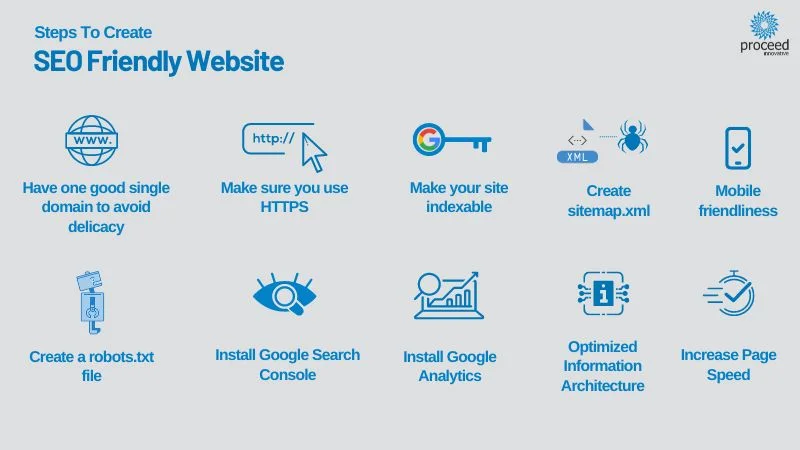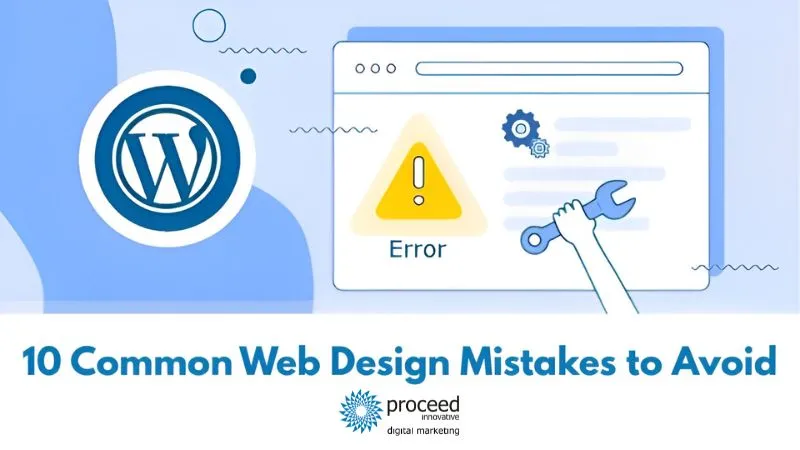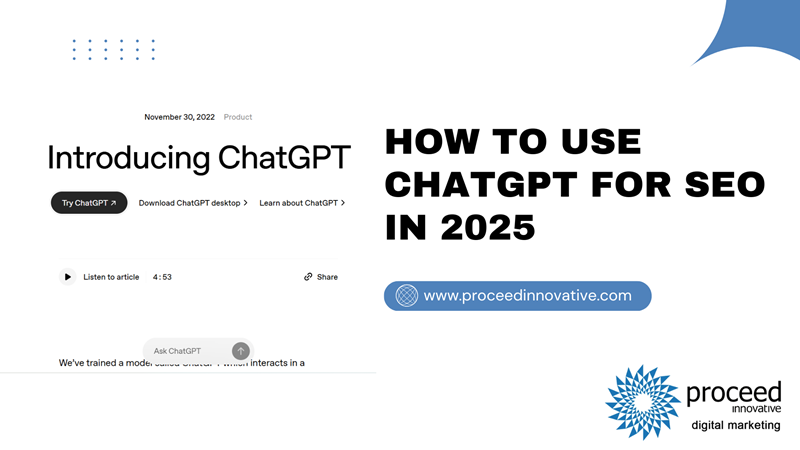A good website can bring a lot of potential customers to your business and the majority of the traffic to your website comes through organic search. This makes it very important to design and build a website that has high visibility on search engines like Google, Yahoo, and Bing so it can rank well in the search engine results pages (SERPs).
To make sure your website has high visibility in the SERPs, it must be designed with search engine optimization (SEO) principles in mind. In many cases, a website is designed and built first, and the SEO aspect is addressed after the website is completed. However, it is best to form an SEO strategy that goes hand in hand with your website design so that important SEO elements are built into the website. Taking this approach will put your website in a great position to start ranking in the SERPs upon launch.
In this guide, we discuss the steps you should take to design and build an SEO friendly website. Combining your SEO strategy with the website design process will ensure that your website is visually appealing, user-friendly, and ready to drive organic traffic.
What is an SEO-Friendly Website?
An SEO-friendly website is a website that is designed and optimized to have good visibility and rank well in the SERPs. Designing a website with SEO principles makes it easier for search engines to crawl and understand the content of your website which results in higher rankings. The higher your website ranks in the SERPs, the more people are likely to see your website when searching for your products or services which brings more traffic and potential customers to your site.
The following are the main factors you should consider when building an SEO-friendly website:
- Website structure: The structure of the website should make sense with easy-to-use navigation and well-organized web pages.
- Content: The website should have relevant, informative, high-quality content that is optimized with your main keywords and phrases.
- Technical SEO: The website should incorporate good technical SEO including secure HTTPS encryption, fast loading times, and a mobile-friendly design.
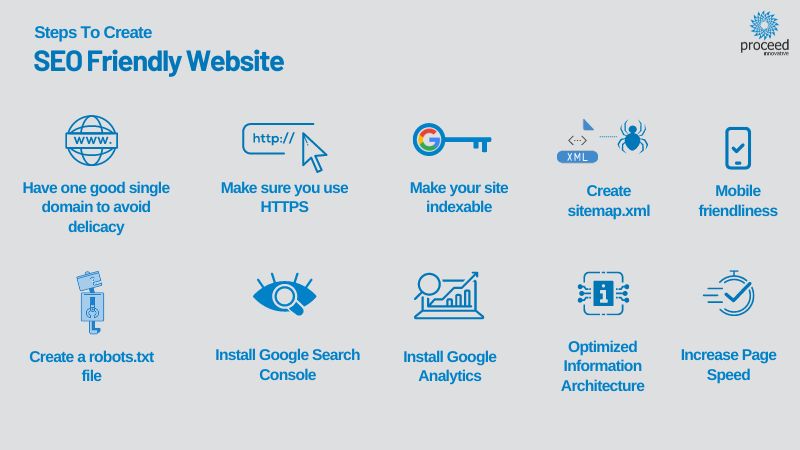
Why are SEO-Friendly Websites Important?
A website that is SEO-friendly is more visible online and offers a better user experience for your visitors. When your website is ranking well, it should appear at the top of the SERPs when people search for your business or for keywords and phrases related to your products or services.
The following are the benefits of building an SEO-friendly website:
- Online presence: Websites designed with SEO principles rank higher in the SERPs which makes it easier for potential customers to find your website when searching for your products and services.
- More traffic: The higher rankings and visibility in the SERPs will lead to more traffic to your website.
- Brand awareness: Ranking well in the SERPs will result in more people seeing your brand. This improves awareness and trust as people are more likely to trust brands that they encounter often and remember.
- Increased leads and sales: The traffic you get from being ranked well in the SERPs brings in more leads and potential sales. People are also more interested in brands they find organically through search as opposed to other advertising channels.
- User experience: An SEO-friendly website improves the user experience with logical structure and navigation, organized pages, fast loading times, quality content, and a mobile responsive design so visitors can access your site on any device.
Steps to Build an SEO-Friendly Website
When building or redesigning a website, it must be designed and optimized with SEO principles in mind so those looking for your brand, products, or services can easily find your website. It must also be user-friendly to ensure that visitors stay on your website, making them more likely to convert into customers.
The following steps will help you develop and optimize your website to rank well in the SERPs.
Developing an SEO-Friendly Website
As mentioned above, you should be incorporating SEO principles into your website design from the very beginning. You must consider the following when it comes to the development of your website.
Basics
The first step is to handle the necessary basics to begin building your website, including the domain, hosting, and content management system (CMS):
- Domain: The domain name is your web address, and the way people enter your website. There should be one domain for your entire website. It is usually best to have a brand-related domain name, such as www.companyname.com. Do not stuff your domain name with keywords.
- Hosting: It is important to get good hosting for your website as poor hosting can negatively affect the user experience on your website and make your site less appealing to Google. You should consider the best hosting available within your budget.
- CMS: The content management system (CMS) is the system used to build, edit, and maintain your website. Popular CMSs like WordPress are easy to use and familiar to Google. You should choose a CMS that best accommodates the specific needs of your website.
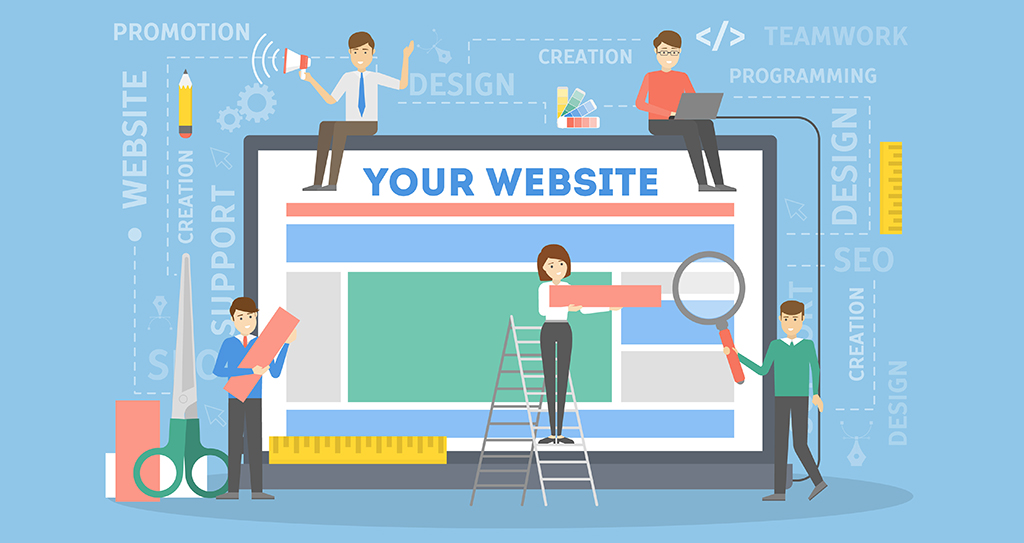
Crawling and Accessibility
When building your website, it is important to make sure it can be crawled by search engines like Google so they can understand your website. To ensure that your website is crawled, consider the following:
- Indexing: Search engines must be able to read and understand the content of your website to index your pages. Make sure the main content on your website is text based, well-written, and optimized. Other content such as images, PDFs, and videos must also have relevant names and be discoverable on your site.
- Link structure: There must be a link structure in place so that search engines can crawl the internal links from your home page. A well-organized link structure helps search engines crawl your site easier and index your internal pages. Adding a sitemap to our website also helps guide crawlers through the pages of your site.
- Configure Google Search Console: Submit your website to Google search console for indexing, URL inspection, crawl statistics, and more.
Architecture and Structuring
The structure and organization of your website provides context beyond the home page for search engines. The information should be structured in a way that makes sense to both users and website crawlers. This includes blog articles, service pages, location pages, FAQ content, and other information on your website.
A good strategy is to ensure that users can navigate your website within three to four clicks. The following is an example of how you can structure your website:
- Home page
- Services page
- Service area page
- Individual service page
- Service area page
- Services page
The URLS for your internal pages should also be structured in a way that makes sense and provides context for people and crawlers. The following is an example of how to structure website URLs:
- companyname.com
- companyname.com/services
- companyname.com/services/city
- companyname.com/services/city/individualservice
- companyname.com/services/city
- companyname.com/services
Always use HTTPS for your URLs to encrypt the data and protect your website from cyberattacks.
The navigation on your website provides users and crawlers with additional context for internal pages and helps them easily find specific pages. Navigation menus should be text-based and incorporate your keywords to help direct users down a logical path. Do not make your navigation menu too complicated or difficult to understand, you must make it easy for users to find internal pages. If users are confused by your navigation, they will go back to the SERPs and visit a competitor.
Mobile-Friendly Design
It is very important for your website to display and function properly on all mobile devices so users can access your website on their preferred devices. More searches are done on mobile devices than on desktops and even if your customers are more likely to convert on a desktop, chances are they first interact with your website on a mobile device. It has also been confirmed that mobile friendliness is a ranking factor for mobile search.
Make sure your website displays properly and loads quickly when accessed on mobile devices. The mobile navigation must also be functional and easy to use.

Page Speed
Page speed is the speed at which the pages of your website load. It is very important for your website to have great page speed for desktop and mobile devices or users will get impatient and go to another website.
You can use Google’s mobile-friendly test tool to check the mobile-friendliness and page speeds for mobile devices and desktops. The tool will provide a report that includes suggestions to help improve page speed.
Usability
Factors such as page speed, page layout, site navigation, site search, and display across devices all impact the overall usability of your website. You must consider the following from the perspective of a visitor on your website to ensure good usability:
- Page layout: Give prominence to more important pages.
- Visual hierarchy: Important visual elements should be bigger than others.
- Site navigation: The navigation should be clear and organized.
- Form entry: Forms should be easy to find and fill out.
- Design: A visually appealing yet effective design makes the site easier to navigate.
Optimizing an SEO-Friendly Website
Developing your website with the SEO-friendly elements discussed above makes it easier to optimize your website. Make sure you take the following steps for SEO-friendly website optimization.
Keyword Targeting
Optimizing your website for your main keywords is much easier once you have the site hierarchy and structure in place. You can start by targeting broad keywords on your home page and general service pages and further refine your targeted keywords for the location pages and individual service pages.
You can use tools such as Google’s Keyword Planner to research relevant keywords and phrases. Once you have identified your targeted keywords for each of your pages, you must incorporate them into the content on the page.
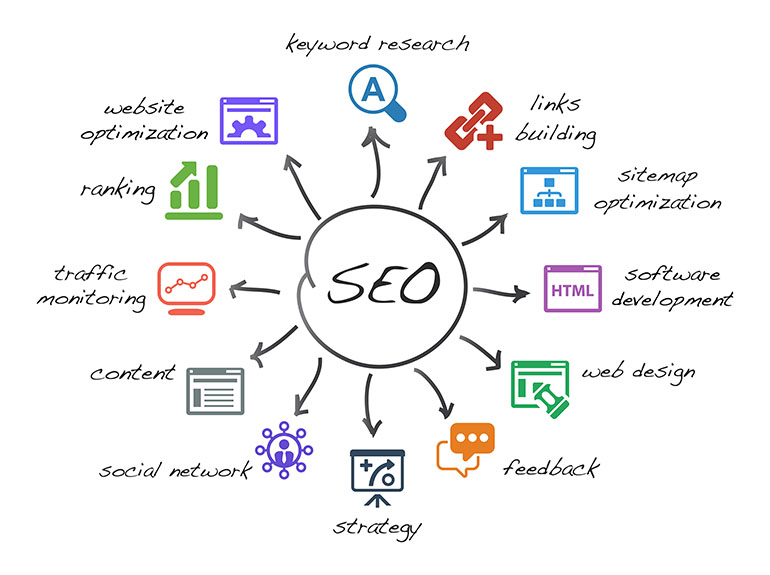
HTML Title Tags
The HTML title tag is the title of the page that appears in the browser tab and on the SERPs, but not on the web page itself. Search engines read the title tags which means that optimizing the title tags with relevant keywords can help improve website rankings.
Follow these steps to optimize your title tags:
- Start the tag with keywords
- Limit the length to 50 or 60 characters
- Naturally use keywords and phrases, do not keyword stuff or over optimize the titles
- Separate elements like category and brand using dividers
- Keep title tag strategy consistent throughout your website
Meta Description Tags
Meta descriptions are the description of each page that is seen on the SERPs under your title tag, but like title tags, they are not seen on the page itself. Your meta descriptions are read by users on the SERPs, and a well-crafted meta description can get you more clicks.
These tips will help you optimize your meta descriptions:
- Accurately describe the content of the page
- Advertise the page to entice users to click
- Naturally include relevant keywords, do not keyword stuff the meta description
Heading Tags
Heading tags are the tags given to headings within the text of the page that help structure the page and assign a hierarchy to the sections. Creating sections within the text of your webpage using heading tags makes it easier for users to scan the page and helps search engines categorize the content.
Make sure to follow the visual hierarchy when using heading tags, using H1 for the most important headers, H2 for the headers under that, and H3 for the headers under H2s, and so on. The H1 headings are also visually bigger than H2s which are bigger than H3s which makes it easier for users and search engines to visually sort the content.
Page Content
The textual content is the most important content on your web pages. Your content should be valuable, relevant, well-written, easy to read and scan, and optimized with your target keywords and phrases. However, make sure you use keywords and phrases naturally and avoid any type of keyword stuffing as this affects the quality and readability of the content.
Search engines like Google reward content it deems as valuable or relevant to the user which makes it important to fill your website with high quality content. You should consider the following to create quality content:
- Naturally using keywords in the content
- Structuring the content in a way that makes sense and makes the page easily scannable
- Using synonyms and alternative phrases for your keywords
- Using phrases that are familiar to your target audience and industry
- Providing content that offers value to your target audience
Image Optimization
You should not only be optimizing the textual content on your website pages, but also the images. Google does not currently use the content of the images, which makes it important to optimize image file names and alt text, so your images appear in the SERPs.
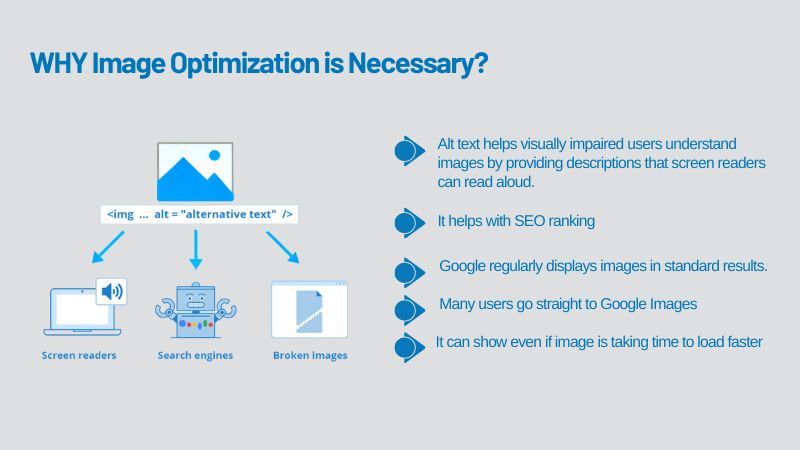
The following tips will help you optimize website images:
- Give the image file a name that best describes the image
- Use alt text that is descriptive of the content of the image and includes keywords
- Make the image shareable on social media
- Give the image the proper size on the page so that it loads and downloads faster
- Add the images to your sitemap
SEO-Friendly Website Design from Proceed Innovative
Whether you are building a new website or redesigning your existing site, you need to have an SEO strategy in place from the beginning that is coordinated with your web design strategy. Your website should be built with SEO principles in mind every step of the way to ensure that it gets indexed and ranked in the SERPs for improved online visibility. SEO-friendly websites are more likely to be found online and trusted by users which results in more traffic, leads, and conversions.
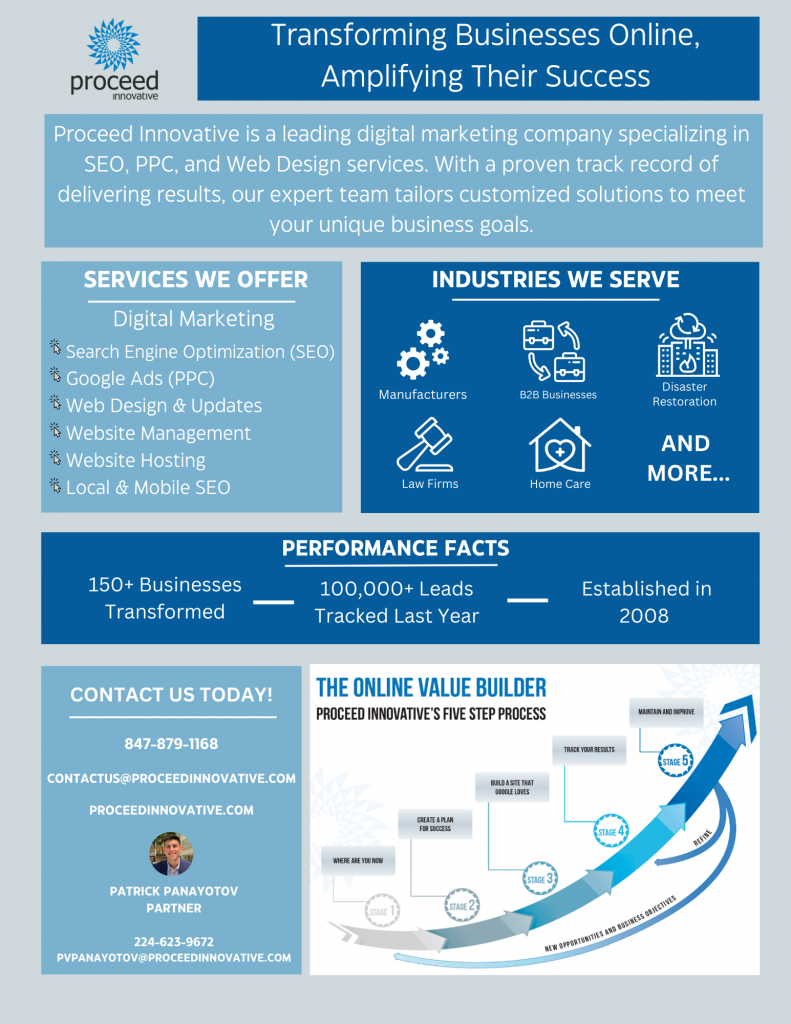
Proceed Innovative is a full-service digital marketing agency that provides expert web design services as well as comprehensive SEO. We build websites for our clients with SEO principles in mind so that they are optimized and ready to rank well in the SERPs upon launch. We work with our clients to understand their needs for their website along with their digital marketing goals so we can form an SEO strategy that can be seamlessly incorporated into the web design process.
As a certified Google Partner, we follow Google’s best practices to build high-quality, SEO-friendly websites that help our clients get found online. For more about our web design or SEO services, you can call Proceed Innovative at (800) 933-2402 or submit a contact form.

